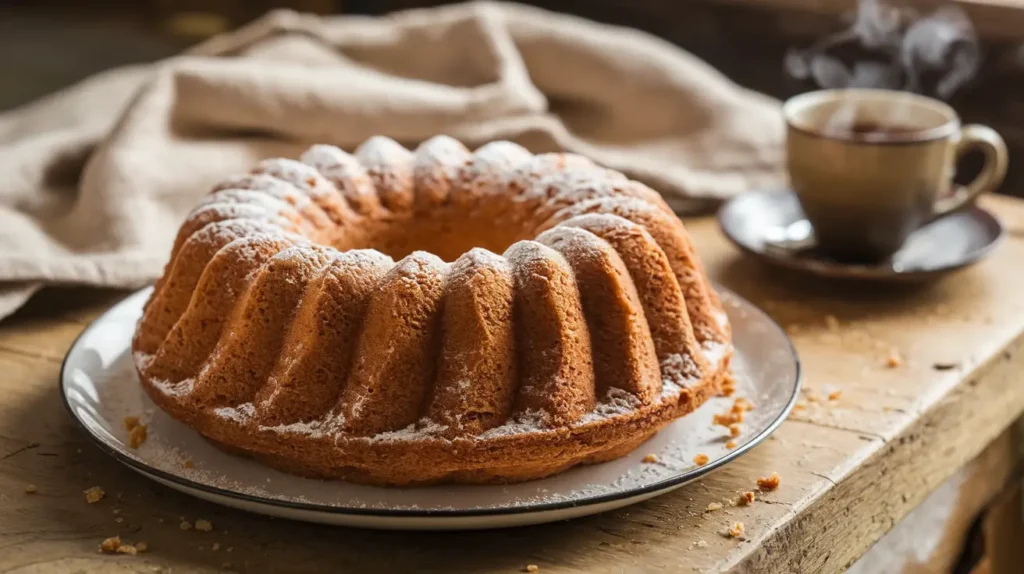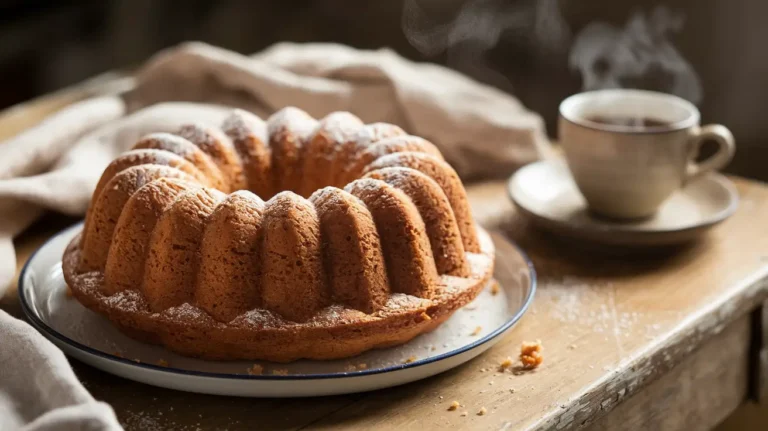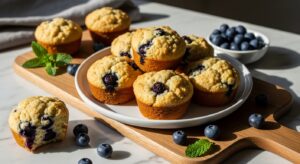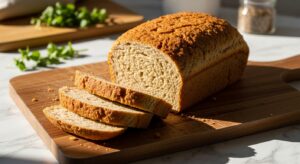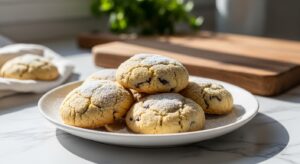Introduction
Bundt Cake is a classic, visually stunning dessert known for its distinctive ring shape. Whether you’re baking for a special occasion or simply craving a moist, flavorful cake, Bundt Cake offers endless possibilities. This versatile treat can be made in a variety of flavors, from rich chocolate to zesty lemon, making it a favorite among home bakers and professional pastry chefs alike.
With its origins in European baking traditions, Bundt Cake has become a staple in home kitchens worldwide. The unique pan design allows for even baking, while the fluted edges create an elegant look that requires minimal decoration. Perfect for birthdays, holiday gatherings, or an afternoon treat with coffee, Bundt Cake is easy to bake and even easier to enjoy.
In this guide, we’ll explore the history, best recipes, baking tips, and creative variations of Bundt Cake to help you master this timeless dessert. If you’re a fan of moist, flavorful cakes, you might also enjoy this Chocolate Cake Recipe for another delicious option.
What is Bundt Cake?
A Bundt Cake is a type of cake baked in a Bundt pan, which gives it its signature round, fluted design with a hole in the center. Unlike traditional cakes that follow a specific recipe, Bundt Cake is defined by its shape rather than its ingredients. This means that almost any cake batter can be transformed into a Bundt Cake, as long as it has the right consistency to hold the pan’s intricate design.
The unique shape of Bundt Cake is not just for looks—it plays a functional role in baking. The hollow center allows heat to circulate evenly, ensuring that the cake bakes uniformly. This results in a perfectly tender crumb with a slight crispness on the edges. The deep ridges of the Bundt pan also help hold glazes and toppings beautifully, making it easy to create a stunning presentation without elaborate decorating skills.
From classic vanilla and rich chocolate to fruit-infused variations like lemon or apple spice, Bundt Cake can be customized with a variety of ingredients. If you love experimenting with flavors, you might also enjoy this Hummingbird Cake, which combines tropical fruits and nuts for a delicious twist.
The History of Bundt Cake

The origins of Bundt Cake trace back to European baking traditions, particularly the German and Austrian kugelhopf. This yeast-based cake was traditionally baked in decorative fluted molds and was often enriched with nuts, dried fruits, and a dusting of powdered sugar. Eastern European countries also had similar versions of ring-shaped cakes that were passed down through generations.
In the 1950s, an American cookware company, Nordic Ware, introduced the modern Bundt pan, inspired by the traditional kugelhopf mold. They trademarked the name “Bundt” and started producing lightweight aluminum pans that quickly became popular in home kitchens. Initially, Bundt Cake didn’t gain much attention, but everything changed in 1966 when a recipe called Tunnel of Fudge Cake won second place in the Pillsbury Bake-Off contest. The cake’s gooey chocolate center and beautiful shape captivated bakers across America, leading to a surge in demand for Bundt pans.
Since then, Bundt Cake has become a staple in the baking world, evolving into numerous variations, including chocolate, lemon, pumpkin spice, and even savory versions. Today, Bundt Cake continues to be a symbol of home baking, offering an easy yet elegant dessert that never goes out of style. If you enjoy rich and indulgent cakes, you might love this Easy Banana Honey Cake Recipe for another delightful treat.
Why You’ll Love Bundt Cake
There are many reasons why Bundt Cake remains a favorite among home bakers and dessert lovers. Here’s why you should consider baking one today:
- Easy to Make – Unlike layered cakes that require precise assembly and frosting, Bundt Cake is a one-pan wonder. Just pour the batter into the pan, bake, and glaze—it’s that simple!
- Moist and Flavorful – The Bundt pan’s design ensures even baking, resulting in a perfectly tender crumb with a deliciously crisp exterior. Whether you choose a classic vanilla base or a spiced pumpkin variation, Bundt Cake always delivers on flavor.
- Versatile for Any Occasion – Whether it’s a holiday gathering, a birthday, or a casual tea-time treat, Bundt Cake fits every occasion. You can experiment with different flavors, glazes, and fillings to match the season or your personal preference.
- Visually Stunning – The intricate design of a Bundt Cake means that you don’t need fancy decorations to make it look impressive. A simple dusting of powdered sugar, a drizzle of chocolate ganache, or a citrus glaze can elevate the cake’s presentation effortlessly.
- Endless Variations – From lemon and chocolate to cinnamon-spiced or coconut-infused, there are countless ways to customize your Bundt Cake. If you love trying new cake recipes, check out this Easy Banana Bread with Cake Mix for another simple yet delicious bake.
Whether you’re a seasoned baker or a beginner in the kitchen, Bundt Cake is a foolproof dessert that guarantees success. Its ease of preparation, beautiful design, and incredible flavor make it a must-have in any baker’s repertoire.
By incorporating Bundt Cake into your baking routine, you’ll always have a go-to dessert that impresses with minimal effort. Now that you know why it’s so beloved, let’s dive into the essential steps for making a perfect Bundt Cake every time!
Step-by-Step Guide to Making Bundt Cake
Ingredients You’ll Need
To make a classic Bundt Cake, you’ll need:
- Dry Ingredients: Flour, sugar, baking powder, baking soda, and salt.
- Wet Ingredients: Butter, eggs, sour cream (or buttermilk), and vanilla extract.
- Optional Add-ins: Chocolate chips, nuts, fruit, or citrus zest for extra flavor.
Instructions
- Preheat & Prepare: Preheat the oven to 350°F (175°C). Grease the Bundt pan well.
- Mix Dry & Wet Ingredients: Whisk dry ingredients together. In a separate bowl, beat butter and sugar until fluffy, then add eggs. Alternate mixing in the dry ingredients with sour cream or buttermilk.
- Bake: Pour the batter into the prepared pan, smooth the top, and bake for 50-60 minutes, or until a toothpick inserted comes out clean.
- Cool & Release: Let the cake cool for 15 minutes before inverting onto a wire rack. Allow it to cool completely before adding glaze or frosting.
For a unique twist, try this Portillo’s Chocolate Cake Secret for an ultra-moist and rich chocolate alternative!
Creative Variations of Bundt Cake

One of the best things about Bundt Cake is its versatility. With just a few ingredient tweaks, you can create a variety of flavors that suit different tastes and occasions. Whether you’re a fan of classic flavors or love experimenting, here are some delicious variations of Bundt Cake to try:
- Chocolate Bundt Cake – If you love deep, rich chocolate flavors, this variation is a must-try. Made with cocoa powder and sometimes melted chocolate, a Chocolate Cake becomes even more indulgent when topped with a silky ganache or dusted with powdered sugar.
- Lemon Bundt Cake – A refreshing and zesty option, Lemon Cake combines fresh lemon juice and zest for a bright citrusy flavor. A tangy lemon glaze drizzled over the top enhances the taste and creates an irresistible finish.
- Pumpkin Spice Bundt Cake – Perfect for fall, this spiced variation features cinnamon, nutmeg, and cloves, along with pumpkin puree for a moist texture. A cream cheese drizzle makes this Cake even more decadent.
- Red Velvet Bundt Cake – This classic Southern favorite is known for its deep red color and subtle cocoa flavor. A Red Velvet Cake pairs beautifully with a luscious cream cheese frosting.
- Coconut Bundt Cake – A tropical twist on Bundt Cake, this version incorporates shredded coconut and coconut milk for an ultra-moist texture and a subtle coconut flavor.
If you’re looking for something completely different but just as delicious, try this Kefir Sheet Cake Recipe for a healthier alternative with probiotic-rich ingredients.
How to Store and Serve Bundt Cake
Proper storage ensures that your Bundt Cake stays fresh and retains its delicious texture. Whether you plan to enjoy it over a few days or save it for later, here’s how to store and serve it properly:
Storage Tips:
- At Room Temperature: Store Cake in an airtight container for up to 3 days. Keeping it at room temperature helps maintain its moist texture.
- Refrigerate: If you need to keep it longer, wrap the Cake tightly in plastic wrap and store it in the fridge for up to a week. This method prevents it from drying out, especially if the cake contains dairy-based fillings or frostings.
- Freeze: To extend freshness, slice the Cake and store the pieces in an airtight container or freezer-safe bag for up to 3 months. Thaw at room temperature for the best texture.
Serving Suggestions:
- Enjoy Bundt Cake with a dollop of whipped cream or a scoop of vanilla ice cream.
- Drizzle it with caramel, chocolate, or fruit glaze for extra flavor.
- Pair it with coffee, tea, or hot chocolate for a cozy dessert experience.
If you love simple and easy bakes, check out this Easy Banana Bread with Cake Mix for another quick and delicious treat.
Tips for the Perfect Bundt Cake
To ensure your Bundt Cake turns out flawless every time, follow these expert baking tips:
- Grease the Pan Well: One of the most common issues with Cake is sticking. Be sure to grease every corner and ridge of the pan using butter or non-stick spray and a light dusting of flour.
- Use Room Temperature Ingredients: Allow butter, eggs, and dairy ingredients to reach room temperature before mixing. This ensures better emulsification and a smoother batter.
- Don’t Overmix the Batter: Overmixing can lead to a dense or tough cake. Stir just until the ingredients are combined.
- Tap the Pan Before Baking: Gently tap the Bundt pan on the counter to remove air bubbles from the batter, which helps prevent holes in the finished cake.
- Cool Before Flipping: Let the Bundt Cake rest in the pan for about 15 minutes after baking. Trying to remove it too soon may cause it to break apart.
If you’re a fan of tropical flavors, consider trying this Hummingbird Cake for a unique take on traditional cakes.
Common Mistakes to Avoid When Baking Bundt Cake

Baking a perfect Bundt Cake requires attention to detail. Avoid these common mistakes to ensure your cake comes out flawless:
- Not Greasing the Pan Properly: Bundt pans have intricate designs, which can cause the cake to stick. Always grease the pan thoroughly, reaching every crevice.
- Overbaking: Baking for too long can lead to a dry Cake. Check for doneness by inserting a toothpick—if it comes out with just a few crumbs, it’s ready.
- Skipping the Cooling Step: Flipping the cake too soon can cause it to break apart. Let it rest in the pan for at least 15 minutes before inverting onto a wire rack.
- Using Cold Ingredients: Cold butter, eggs, or dairy can lead to uneven mixing, affecting the cake’s final texture.
- Filling the Pan Too Much: A Cake needs space to rise, so avoid overfilling the pan. Leave about an inch of space from the top to prevent overflow.
For another delicious chocolatey dessert, you might love this Portillo’s Chocolate Cake Secret to satisfy your sweet tooth.
